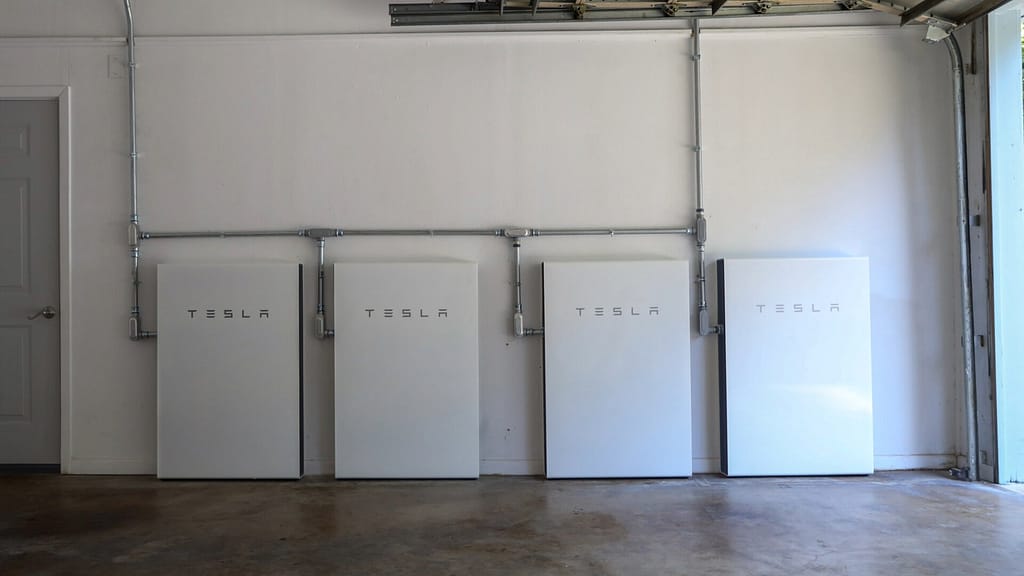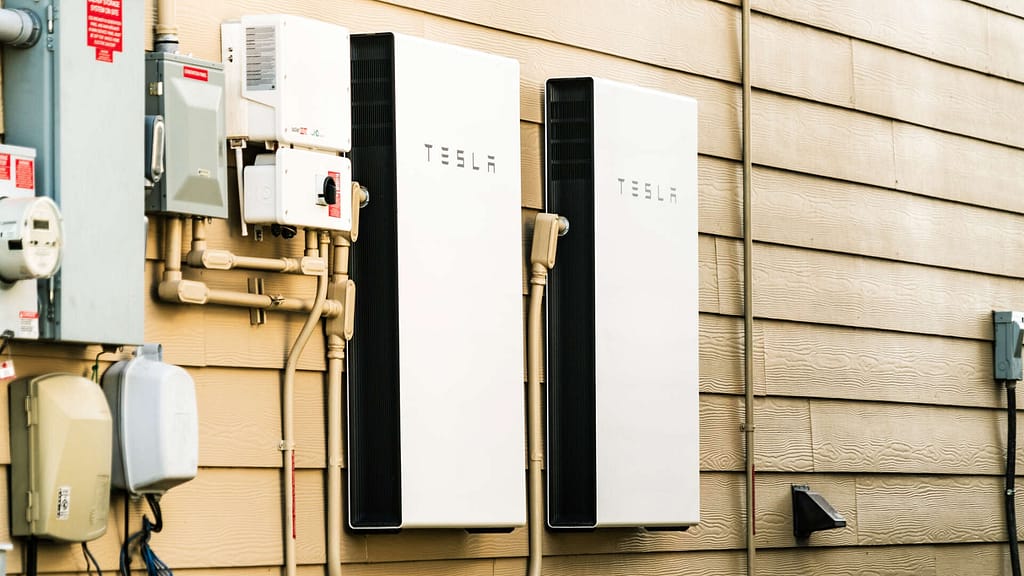
Wondering about the Tesla Powerwall cost? Starting at $9,300 for the Powerwall 3 unit alone, this popular home energy storage solution includes the necessary accessories but excludes installation, taxes, and incentives. Prices can be reduced further through rebates and buying multiple units.
Table of contents
Average Price of a Tesla Powerwall

The Tesla Powerwall is a popular choice for home energy storage. If you’re considering buying one, it’s important to understand the costs involved. The average cost of one Powerwall along with installation is $16,500. This price includes the necessary Gateway and other accessories, but it doesn’t include incentives, taxes, or additional installation costs depending on complexity.
If you’re thinking about purchasing more than one Powerwall, the cost per unit decreases. For instance, two Powerwalls and installations average for $33,000. Just like the single unit, this price excludes incentives, taxes, and additional installation costs.
This pricing structure makes the Tesla Powerwall a considerable investment initially, but buying multiple units can be more cost-effective if you need greater energy storage capacity. Remember, these prices are before any potential savings from local or federal incentives which could significantly reduce the overall cost.
Factors Influencing the Cost of a Tesla Powerwall
When planning to buy a Tesla Powerwall, the total cost can be affected by several factors beyond the basic price of the unit. Here are the key elements that can change how much you end up spending:
Installation Costs
The cost of installing a Tesla Powerwall can vary. On average, installation fees might add several thousand dollars to the overall cost. Several factors can influence the complexity and expense of installation, such as the layout of your home and the state of your existing electrical system. Homes with complex layouts or outdated electrical systems might require more work, increasing the installation costs.
For a more accurate estimate of the installation cost, feel free to contact us at Good Faith Energy. We are a standout company in the Texas solar market, dedicated to delivering excellence and ensuring customer satisfaction. Our approach involves creating customized solar solutions tailored to meet each client’s specific energy needs.
Additional Equipment and Upgrades
To ensure your Tesla Powerwall works optimally, you might need extra components. For instance, inverters are necessary for converting stored energy into usable electricity, and some homes might need upgraded electrical panels to handle the added load. The cost for these additions can vary depending on what your home already has and what it needs. There are also optional upgrades that can enhance the performance of your Powerwall, and these will have their own costs.
Incentives and Rebates
Purchasing a Tesla Powerwall can become more affordable with the help of federal and state incentives. Here’s how you can reduce your costs:
- Federal Tax Credits: If you buy a Tesla Powerwall as part of a solar energy system, which could include solar panels or a Solar Roof, you can qualify for federal income tax credits. This is because the Powerwall, when paired with solar systems, is eligible for the Investment Tax Credit which is a 30% tax credit. As of 2023, this benefit applies to the Powerwall regardless of the energy source.
- State Incentives: You can find local incentives specific to your area that may further decrease the cost of a Powerwall. It’s best to check the latest details directly on the website of the program providing the incentive. This will give you the most current information on what’s available, how to qualify, and how to claim these benefits.
- Local Discounts: In specific regions, additional savings are possible. For example, Oncor is offering up to $8,000 as an incentive to solar owners who are located within their territory. Other utility providers like Garland Power & Light, Sunset Valley, and Guadalupe Valley Electric also offer rebates.
These incentives can make a significant difference in the overall cost of your Tesla Powerwall, making it more accessible and affordable. (Source)
Long-term Benefits and Cost Savings
Investing in a Tesla Powerwall can bring significant financial benefits over time, mainly through savings on your energy bills. The Tesla Powerwall stores electricity either from the grid when rates are low or from solar panels during the day. You can then use this stored energy during peak hours when electricity rates are higher, or when the sun isn’t shining. This ability to manage when you use your stored energy helps you reduce your monthly energy bills significantly.
ROI (Return on Investment)
The return on investment (ROI) for a Tesla Powerwall depends on several factors, including the cost of electricity in your area and how much energy you consume. On average, homeowners begin to see the financial benefits of their Powerwall within 6 to 10 years. The savings from lower energy bills gradually add up, eventually offsetting the initial costs of the Powerwall and its installation.
By using the Powerwall to its full potential, especially when combined with solar panels, the savings can increase, allowing you to reach your break-even point faster. After this point, the savings are essentially extra money in your pocket, making the Powerwall a smart long-term investment.
Conclusion
In conclusion, the Tesla Powerwall represents a significant upfront investment, yet offers substantial long-term value through energy cost savings and increased efficiency. While the initial price, installation costs, and any additional equipment can add up, the potential for reducing your overall energy expenditures makes it an attractive option for those looking to enhance their home’s energy independence. Moreover, the availability of various incentives and rebates can effectively lower the initial financial barrier, making the Powerwall an economically feasible choice for many homeowners.
Furthermore, the real financial benefit of the Powerwall becomes evident over time. As energy prices fluctuate, having a Powerwall helps stabilize your costs by relying less on the grid and more on your own renewable energy. With the average return on investment period ranging from 6 to 10 years, the subsequent savings transform into profit, exemplifying the Powerwall not just as a product but as a smart energy solution. Thus, for anyone considering a move towards a more sustainable and cost-effective home energy system, the Tesla Powerwall offers compelling advantages that go beyond mere cost savings to include energy security and sustainability.
Fact checked by Jacob Petrosky